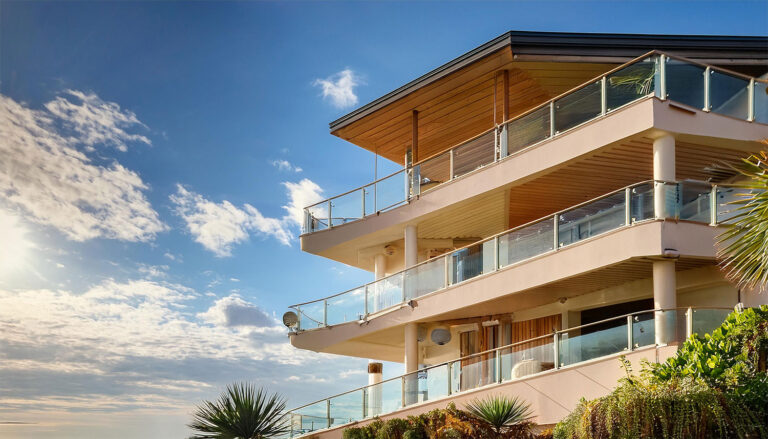What Exactly is an Exterior Elevated Element (EEE)?

Table of Contents
So, you’ve heard the buzz about SB 326 and SB 721, California’s balcony inspection laws. You know they’re important, but you’re still scratching your head over this term that keeps popping up: “Exterior Elevated Element” or EEE. What is it? And does it even apply to your property?
Let’s break it down in plain English, because understanding the lingo is the first step to ensuring your building is safe and compliant.
EEE: The Balcony Law’s MVP
At its core, an EEE is any part of your building that’s:
- Elevated: It’s more than 6 feet above the ground (think second-story and up).
- Exterior: Exposed to the elements, not tucked away inside.
- Designed for People: Meant for folks to walk on, stand on, or otherwise use.
Essentially, it’s anything you might step out onto that’s not at ground level. Simple enough, right?
Balconies and Beyond
Of course, balconies are the poster child for EEEs. But the list doesn’t stop there. SB 326 and SB 721 also cover:
- Decks: Those spacious outdoor entertaining areas, even small ones attached to individual units, can fall under EEE regulations.
- Walkways: Elevated paths connecting different parts of your building or complex? Yup, they’re in.
- Stairs: Exterior stairs, especially those leading to balconies or rooftop areas, need to be checked too.
- Guardrails & Handrails: These safety features are vital on balconies, decks, and stairs, so their condition matters.
Surprise! These Might Be EEEs Too
The laws can get a bit nuanced. Here are some elements you might not have considered:
- Awnings & Pergolas: If they’re attached to the building and elevated, they’re likely in.
- Elevated Patios: Ground-level patios are exempt, but raise them up and they could fall under the law.
- Some Light Fixtures: Yes, even certain exterior lighting fixtures that are elevated and accessible can be EEEs.
Contact DrBalcony for a professional inspection!
Ensure the safety of your balcony and living space with DrBalcony - We're a Tech Engineering firm that specializes in California SB326 & SB721 balcony inspections. Over 300+ completed projects in California.
Request A Free EstimateClick To CallWhy All the Fuss About EEEs?
California’s climate, with its sun, rain, and even earthquakes, puts a lot of stress on these structures. Over time, they can deteriorate, leading to:
- Safety Hazards: Collapsed balconies, faulty railings, or slippery walkways can cause serious injuries.
- Costly Repairs: Small problems left unchecked become major (and expensive!) structural issues.
- Legal Headaches: If someone gets hurt, you could face lawsuits and hefty fines.
The DrBalcony Approach: Beyond the Checklist
We don’t just inspect to check a box. Our team:
- Knows the Laws Inside-Out: We’re experts in SB 326 and SB 721, ensuring thorough compliance.
- Uses Cutting-Edge Tech: Drones, AI, thermal imaging – we leave no stone (or crack) unturned.
- Provides Crystal-Clear Reports: You’ll understand exactly what needs fixing, and we’ll help you find the right solutions.
Don’t Let Your EEEs Become Liabilities. Get an Inspection Today!
Whether you’re a homeowner, HOA, or property manager, understanding which elements on your property require inspection is crucial.
Ready to ensure your property is safe and compliant? Contact DrBalcony today!
Contact DrBalcony for a professional inspection!
Ensure the safety of your balcony and living space with DrBalcony - We're a Tech Engineering firm that specializes in California SB326 & SB721 balcony inspections. Over 300+ completed projects in California.
Request A Free EstimateClick To CallFAQ Section: Top Questions & Answers
My property is well-maintained. Do I really need SB-326/SB-721 inspections?
YES! Even with excellent maintenance, hidden issues can develop due to construction errors, material flaws, or severe weather exposure. Inspections are about ensuring those don’t turn into major problems.
Our balconies were inspected a few years ago – isn't that enough?
Unfortunately, no. California laws mandate inspections on a set schedule, often every 6 years. Deterioration can happen quickly, making regular assessments essential.
Can I use my regular handyman for the balcony inspection?
It’s not recommended. Unless they hold specific licenses (architect, structural engineer, etc.) their inspection won’t be considered valid for SB-326/SB-721 compliance.
What if the inspection uncovers major issues?
First, don’t panic! Early detection often means less extensive (and expensive) repairs are needed. Work with your inspector to prioritize fixes, and explore if they offer repair services for a streamlined solution.
I'm worried about the cost of inspections. Are there any resources to help?
Start by getting detailed quotes from multiple companies. Factor in that proactive inspections help you avoid even bigger costs down the line due to neglected problems. Some property management associations offer guidance on budgeting for balcony compliance.
- List Item #1
- List Item #1
- List Item #1
- List Item #1
- List Item #1
I started off by doing 1 inspection with them back in June because I knew it needed work done. Now, they’ve completed 2 of my properties and have 2 more inspections coming up this month. All great so far! They’re great at keeping me updated
- List Item #1
- List Item #1
- List Item #1
- List Item #1
- List Item #1
I would like to share the fact that this company has been extremely honest and helpful with this challenging project. Balcony and walk way repairs are very expensive, so you want the very best professionals next to you
- List Item #1
- List Item #1
- List Item #1
- List Item #1
- List Item #1
Greg was very helpful in explaining the entire process. They walked me through everything and helped me keep both of my properties in compliance!

